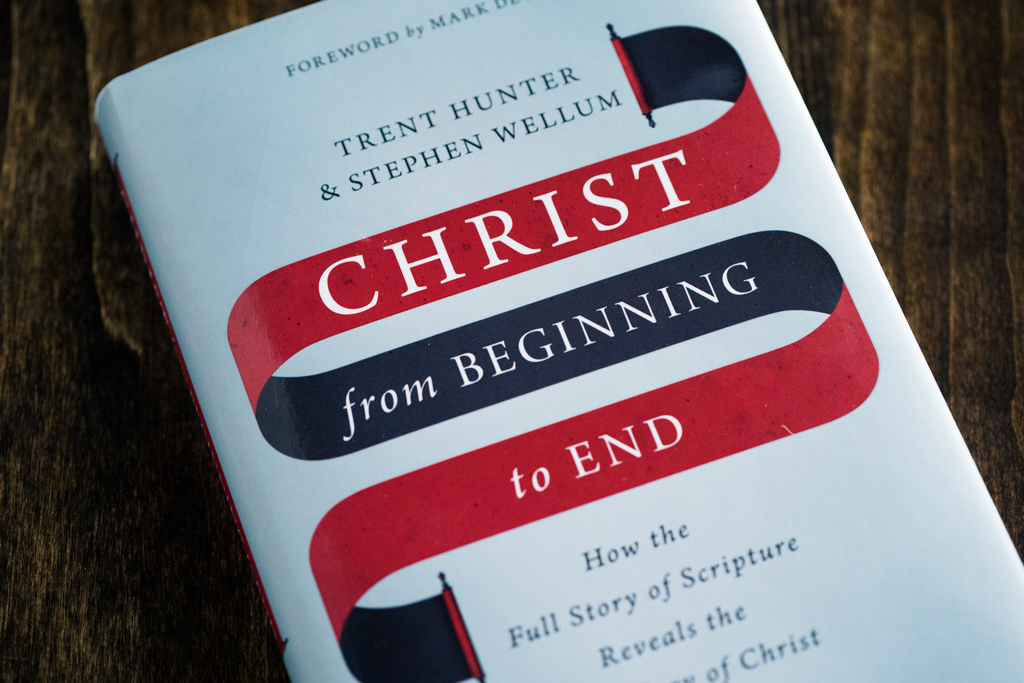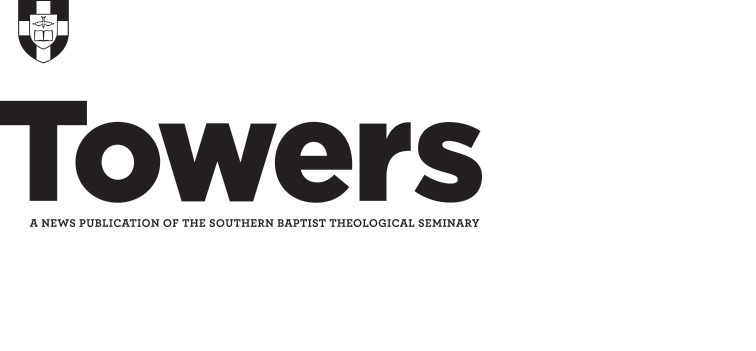EDITOR’S NOTE: Below, Stephen J. Wellum, professor of Christian theology at Southern Seminary, talks with Towers writer Sarah Haywood about his new book, Christ from Beginning to End, co-written with Trent Hunter.
SH: What prompted you to write the book?
SJW: The book came about over a long period of time. It’s basically designed to be a popular version of helping people think about how the Bible fits together. So I’ve been teaching this for years and doing conferences for churches. I used to call it a “bird’s-eye view of the Bible,” because when people read Scripture, they often don’t know how parts fit with the whole. I was teaching this at Ninth and O Baptist Church in a Sunday School format. The co-author, Trent [Hunter], was a student at Southern and helped me lead that class. He suggested, “Hey, we’ve got to get this out. You’re writing these things at an academic level.” So with my colleague Peter Gentry, I wrote a larger book called Kingdom through Covenant and that was for the more the academy. This is more for the everyday person in the church — for hopeful pastors and Bible study groups, to help them think through how the Bible fits together. So it came out of classes and speaking in churches. It came out of the desire to see something written that people can pick up and use with their families.

SH: What is the value of having this material available at a popular level?
SJW: What I mean by “popular” is that it’s written at a level where I think somebody can probably understand it by the end of elementary school. Learning levels all the way up to pastor of a church might want to use it for a Bible study, Sunday School classes, Bible study fellowships, those kinds of things. It’s not trying to be too technical but still seeks to be accurate in helping them
read Scripture.
SH: You say to read the Bible as a divine book and human book. Can you talk about how those are different and how we should think of both?
SJW: We’re starting from the conviction that all Christians should start from, which is that we read Scripture, we interpret Scripture, according to what it is. So that raises the question: “What is it?” According to Scripture’s own claim, it is God’s Word, it’s a divine book. It’s unfolding God’s eternal plan. But that book comes to us not divorced from history and time. It comes through authors, so that this is our doctrine of inspiration. God speaks through human authors so that what those authors write is God’s Word. That’s where the divine and human come together. So what that means is we are now reading Scripture for an ultimate unifying message, a coherent message.
There’s one sense in which you read the Bible as you’d read any other book, yet it’s not any other book. We do look at how Isaiah has put together the prophecy of Isaiah. It’s a literary unit. It is treated as a literary unit, so then we read it like other books created by human authors. Typical books can have contradictions and errors, but that’s not the Bible because it’s God’s Word. Overtime, we’d be hard-pressed to find 10 people that would agree with one another, especially over a period of time.
Yet we have 40 authors or so who write Scripture, and in our English Bible of 66 books, they are unified. Each one will fit in terms of a larger whole.
If you pick up a jigsaw puzzle, you don’t start with the assumption that all these pieces don’t fit. You start with the assumption that because it’s God’s Word, it’s all going to fit. Ultimately, God is speaking through all those authors, but we must understand what he’s saying in terms of the whole Bible.
SH: In reading the Bible, what mistakes do we make?
SJW: We often take it out of context. You’ll take passages of Scripture, you’ll read them isolated from where they fit in terms of the Bible, then you’ll make those passages say, mean, and apply all different ways than the Scriptures are actually saying. So the goal of this book is to help people think about the context of every passage, what it means in its immediate or direct context, and how it fits with an unfolding plan. Scriptures come to us over time.
So if you’re reading Isaiah, Isaiah doesn’t just come out of nowhere, he builds on what’s previously written. That’s a big mistake that people make, and that results in the biggest problem that we face, which is that we’re pretty familiar with the New Testament, but we don’t know how the Old Testament fits. We should take seriously 2 Timothy 3, where Paul says to Timothy “All Scripture is God-breathed,” and in context he’s talking primarily about the Old Testament because the New Testament is being written. That Old Testament is useful for doctrine, correction, reproof. We want to rightly know how to apply Scripture.
SH: How can we read the story and lose sight of Christ?
SJW: By not seeing how the entire story — from creation, through fall, the plan of redemption to the Old Testament — is centered in him. Instead of saying, “Well, this is an interesting story about the Israelites and the wilderness,” ask instead: “What is this doing here, and how does it contribute to our understanding of the coming of Christ, who he is, why he must come, what he has done, and what he has accomplished?” If you read isolated parts of the Bible, you miss how it all culminates in Christ.
SH: What was it like co-authoring?
SJW: Every time you co-author, it has a set of challenges. Because I had done similar studies like this for churches, Trent then took my audio lectures and notes and agreed to put them into chapters, and that became the backbone of the book. So he did that first, and then I came back on my sabbatical a year ago and worked through it thoroughly. Then it went back-and-forth from there. It truly is an integrative co-authored work that way.
SH: What do you hope that readers take from it?
SJW: I hope first that as people read it, their own study of the Bible would improve. The goal is that as they go back and read the Scriptures themselves, they would have a better grasp of how Leviticus, Numbers, and the Old Testament fits with the New, that they wouldn’t get lost in all the details, but perceive the big picture.
Ultimately, as the title of it conveys, the unified message of Scripture leads to understanding who Jesus is, that he is central to the Bible story. He’s found through all of Scripture. I hope this book leads to being rightly Christ-centered in our reading of Scripture, rightly seeing how God has put together his plan and how Scripture unfolds that plan.





